Skate or Ray Wing with Brown Butter
June 24, 2012 | Updated July 11, 2022
As an Amazon Associate I earn from qualifying purchases.
It was a long time ago, but I remember my mother clearly: “Ugh, sea robin. Throw it back!” So I did. It’s my first memory of “trash fish.” Here in California, bat rays have been tossed in the same bucket, but I can tell you that they can be delicious, and this recipe for ray wing and brown butter will show you.
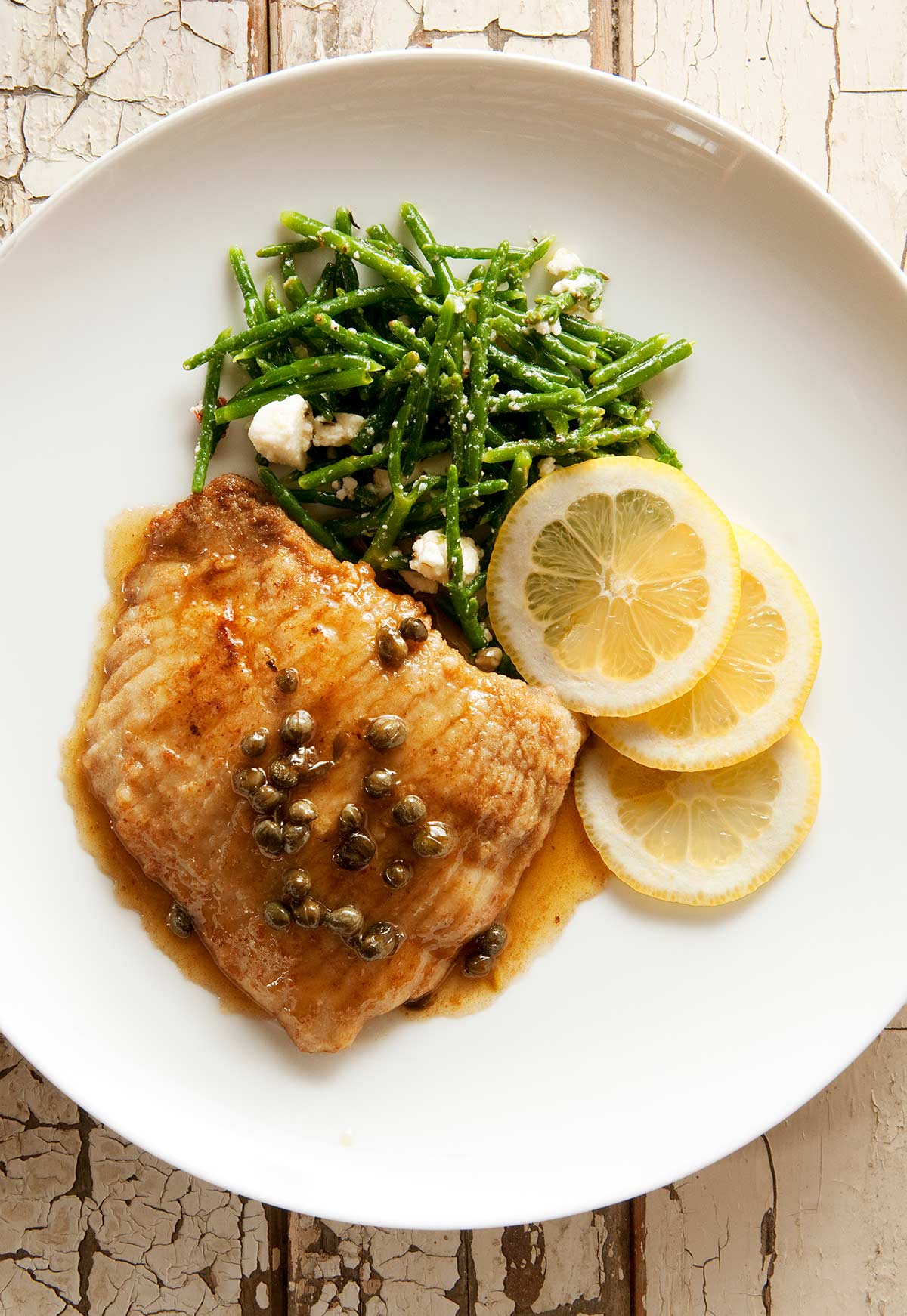
For more than 35 years I’ve been questioning people’s choices on what is and what is not a good fish to eat. And in that time it’s become apparent that what I call “fish prejudice” is a nearly universal condition. It helps define the difference between “us” and “them” among ethnic, racial or regional groups. Fish prejudice is almost never about flavor. It’s about identity.
Few fish fall into this category more strongly than do sharks, skates and rays. When I was a boy, no one I knew kept any of these creatures. Although I later met some old Italians who loved skate or ray wing.
It’s funny, when it’s on a restaurant menu, all kinds of people will order skate wing — and chances are, half the time they are ordering ray wing without knowing it.
Food television has done a lot to show culinary xenophobes that they just might be missing out on something good. America’s cultural melting pot is another huge factor. It’s growing increasingly rare for someone to stick solely within his or her own group, especially at the table.
But still fish prejudice remains, especially among anglers. And I am not immune. Case in point: Myliobatis californicus, the Pacific bat ray. I’ve caught more than a few of these critters since I moved to California, but for years never kept one.
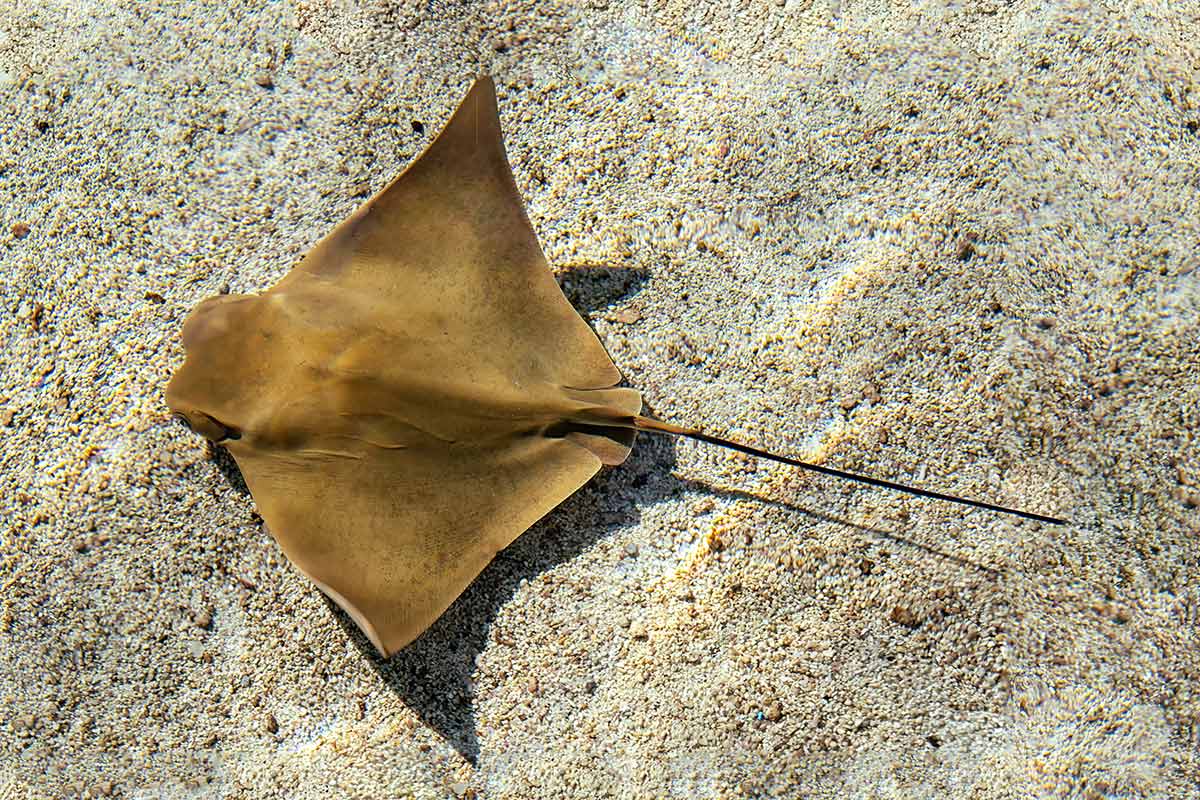
Absolutely everyone I knew — across ethnic groups, mind you — said they were inedible. “Mud marlin” is the ray’s nickname, as they often live in muddy areas and fight like hell when you hook them. I suspected they were inedible because, like all members of the shark family, they process urea through their skin. So the flesh of a poorly handled shark, skate or ray can smell like piss, or worse, like ammonia. Not good eats.
You defeat this problem with sharks by gutting them on the boat, minutes after you catch them. Do this, get the fish on ice, and you will have one of the best-tasting fish in the ocean. I’ve done this with about a dozen different species of shark, too, so it seems pretty widespread.
With skates and rays, you only eat the “wings.” With the skates I’d caught back in New York and New Jersey, when you catch one you kill it and slice the wings off right then and there.
So it nagged at me why a bat ray wing must be bad eating. Something wasn’t clicking. I knew the prejudice was crap once I learned that bat rays eat clams. They will occasionally eat other things, like other mollusks and crabs and squid, but they are primarily eaters of clams. Remember: You are what you eat, no matter where you live. And every other clam-eating fish I’ve ever caught tasted wonderful. I needed to get over this thing with the bat ray and just eat one.
So one day I told my friend RJ, “If we catch a bat ray, I want to keep it.” RJ Waldron, who I’ve been fishing with for many years, tolerates my eccentricities and was game for it. We were fishing for leopard sharks, so there was a good chance we’d connect with a mud marlin.
We soon hooked one. Bat rays are sullen, willful fish that tear line off your reel and stay on the bottom. No head shaking, no frilly runs. Just power. Lots of power. Turned out to be a nice one, about 10 pounds.
Once onboard, RJ killed the ray and sliced off the wings. He handed them to me and I immediately realized another reason why bat rays are reviled as food: They’re slimy.
Skates have skin like sharks: Smooth as silk one way, rough as sandpaper the other. Rays cover themselves in a protective layer of slime, and slimy fish are almost universally hated by humans. The picture was becoming clearer.
How to Prep a Skate or Ray Wing
I know how to deal with rays and skates and slimy things, so filleting this bat ray wing was no biggie.
Start with the slime. Skates don’t have this issue, but rays do. You can remove it in one of two ways: Get a handful of coarse salt and scrub each ray wing with it in the sink, or just scrub the skin with a scrub brush, also in the sink. It will remind you of that scene in Ghostbusters, but get over it. I will salt the skin when I am leaving it on for poaching, and simply scrub it when I am removing the skin.
If you want a skate or ray wing filleted, you need to slice the meat off the center line of cartilage that runs down the center of the ray wing. Once you do that you can skin the fillet like any other fish. Lots of people skip this step entirely and poach the wings; once the meat is cooked, the skin and cartilage slips right off.
Here’s a video I made on how to clean a ray wing.
Skates and rays also have a few other oddities you should know about. For starters, unlike most other fish, skates and ray wings need to be aged in the fridge a couple days. This firms up the meat enough so you can fillet it without it falling apart. What’s more, a skate or ray’s muscle structure is weird: It looks like wide-wale corduroy. The “grain” of the skate wing all radiates out from where the center of the skate once was.
Skate or ray wings should be brined. The brine draws out any stray smell of ammonia or urea that might be in the wing. A properly handled wing will not have this smell at all, but brining also seasons the meat and helps keep it tender when you cook it. Skate wings, which have no fat in them, are notorious for being dry. If you want, add a splash of vinegar to the brine, too.
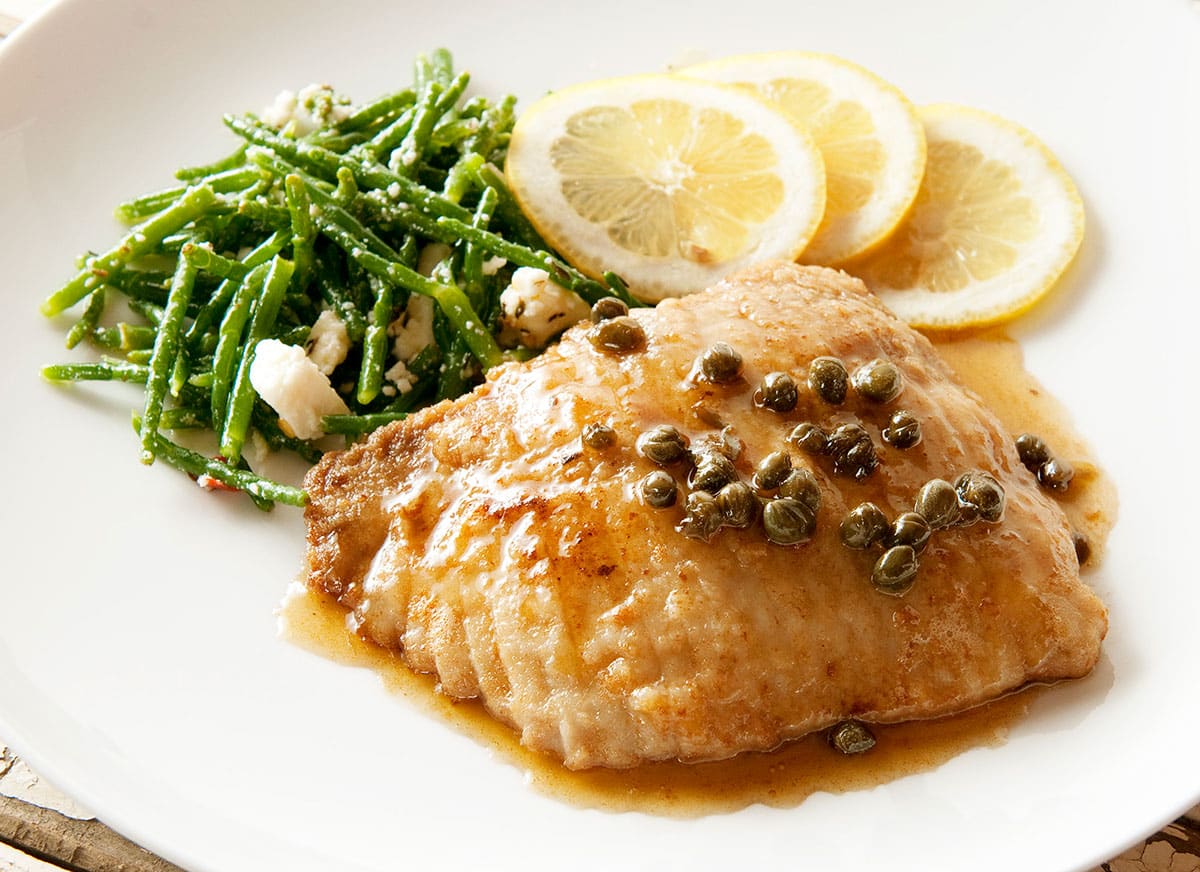
Once you’re prepped your wings, cook them in one of a few ways — dusted in flour and sautéed, deep-fried, or poached. All are ideal. Skate or ray wing will not hold up on a grill, and I don’t like them baked or broiled. But that’s just me.
The classic recipe for skate wings is that French method, sautéed in brown butter and served with capers. So I did that with the bat ray.
Other good options for skate or ray wings would be Spanish mojo de ajo sauce, Italian scampi sauce, the classic piccata, or with an Italian salsa verde.
I have to admit that all along the way, from the deck of the boat to meat on the fork, I was hyper-aware of anything that might be “off” or smelly or unpleasant about this fish. But all along the way, the bat ray proved to be just like a regular skate wing. I cut some with my fork and looked at it. A little darker than the Atlantic skates I’m used to. Weirdly, it looked a lot like chicken thigh; same color and texture, only a lot softer. I took a bite.
Tender like flounder or sole, meaty like a striped bass, and absolutely free of any bad aroma or flavor. It was just like a skate wing. Only it was a bat ray. My head had told me it was going to be like this, but I’d fallen prey to the universal disdain for this fish. Peer pressure had, for years, trumped what I knew in my heart to be so. I am glad I was wrong.
And the next time I hook up with a mud marlin, you can be damn sure he’s coming over the rail.
Skate or Ray Wing with Brown Butter
Ingredients
- 4 skate or ray wing fillets
- 1/4 cup kosher salt
- 4 cups cool water
- Flour for dusting
- 6 tablespoons unsalted butter, divided
- 1/4 cup sherry or champagne vinegar
- 1 tablespoon honey
- 2 tablespoons small capers
Instructions
- Mix the salt and cool water until the salt dissolves. Submerge the skate or ray in the brine and put in the fridge for 1 to 4 hours.
- Turn the oven to 200°F and set a large baking pan or casserole dish inside. Heat 2 tablespoons butter in a large saute pan over medium-high heat. Dredge the skate wings in the flour and shake off any excess. Lay them in the pan so they are not touching each other; you may need to cook the skate in batches. Turn the heat down to medium and fry the skate wings until they are golden brown, about 4 minutes. Carefully flip the skate and cook for 2 to 4 minutes on the other side, depending on how thick they are. If you've never cooked skate before, it cooks more slowly than other fish, so give it a few more minutes that you would a comparable fish.
- When you are done with the first batch of skate, set them in the oven to keep warm and repeat the process with the rest of the skate.
- Once the skate is cooked, Pour off any butter from the pan and wipe it off with a paper towel. Add the rest of the butter and set it over medium-high heat. Swirl the pan and let the butter cook until it has browned, then add the vinegar, capers and honey. Swirl to combine and let this boil 1 minute. Put a piece of skate on each person's plate and pour the sauce over. Serve at once.
Notes
Nutrition
Nutrition information is automatically calculated, so should only be used as an approximation.


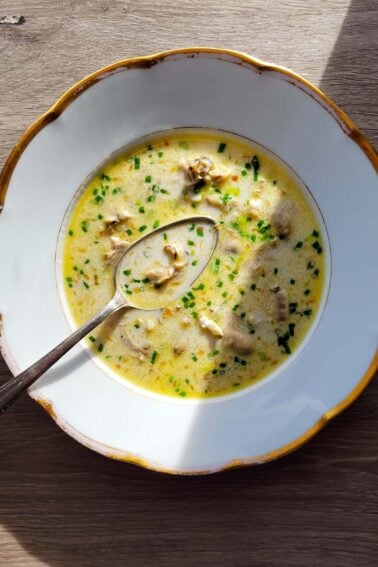

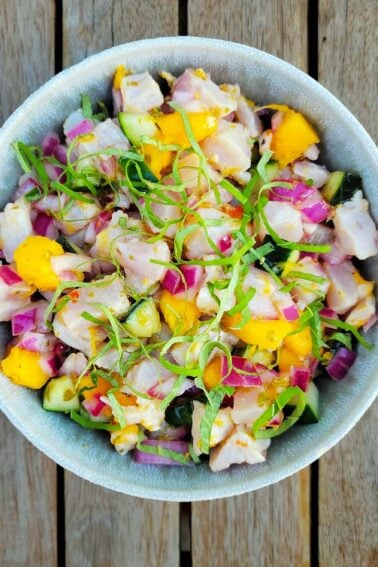

I recently hooked a few skates/rays and I’ve found that to remove the slime, what works best is to just take a knife and scrape the wings clean. Much easier and faster than scrubbing.
Out here in Malaysia, they smear a sambal on top of skate wings, wrap them in banana leaves, and grill them on an oiled griddle (it’s called “ikan pari”). Do you think your bat ray can take the same treatment?
Hank, thanks for the false albacore link. When they’re back here in September, I’ll definitely give it a try.
Since the issue of contaminants has come up, I hope you’ll forgive me for posting a link to an article I wrote for the Washington Post about the risks of eating fish and how they balance with the benefits. Bottom line: except for pregnant women and small children, who should be careful about the fish highest in mercury, the benefits of fish almost always outweigh the risks:
https://www.washingtonpost.com/national/health-science/eat-more-fish-risks-overstated/2012/04/02/gIQARwPNrS_story.html
Matt: Very few fish are not safe for eating… in moderation. That said, what’s safe for me is different from what’s safe for your wife and son. Here is a good guide to eating fish in the San Francisco Bay: https://oehha.ca.gov/fish/nor_cal/2011SFbay.html
Take this as a guide, not as gospel. The warnings are a little overwrought and are VERY conservative. But they are good to know, so you don’t think it’s OK to eat sharks and surf perch every day…
I have enjoyed reading your posts about the lesser know fish. I was curios though do you ever consider the pollution contained in fish. You were very in depth about wild ginger and its possible dangerous side effects but I haven’t seen were you talk about it with fish. I know most of the concerns is with young children and women in child bearing age. My wife just had our first son and I did a lot of research and found that besides being a very touchy subject (especially in pregnancy circles) a lot of fish are considered not safe for eating.
Great post, Hank! I love when you try new species that aren’t commonly eaten. Why don’t you eat the cartilage, though? I love the texture. I had a happy moment at a Meatpaper issue release party once when I overheard a fashionable young lady say “I love cartilage!” then bite into a pig ear.
This recipe reminds me of why I like this blog so much! Thanks for taking the time to show us how to make Bat Rays delicious, I’ll definitely try the next time I hook up with one. Especially now that I know what to do with it.
Robert: Rays mostly eat clams, which do not carry a high mercury load. That said, They ARE long-lived and can bioaccumulate mercury over time. I probably would not serve them to really young kids or pregnant women, and I am not about to make them a mainstay of my diet.
That said, one smallish one every now and again is no problem.
I do believe that when prepared correctly, they are at least good, if not delicious. However, living in the SF bay area, i choose not to eat bay rays due to the very high amounts of mercury in them. They are bottom feeders that spend their entire lives in the heavily polluted bay. Rays scavenge the floor eating whatever they come upon, including bait fish that have died from mercury poisoning. The only think i would consider eating from the SF bay would be migratory species like stripers or halibut. I understand its ok in monderation, i believe its one serving per month of fish from the bay. Good Eats my friend.
A couple of years ago, I went on a fishing trip that was hosting a group of local chefs for a Slow Food event. We all caught well-known So. Cal. eating fish–kelp bass, sand dabs, sculpin–and someone brought up a wolf eel. Odd, fearsome-looking fish (not a true eel), nobody knew anything about it, and nobody wanted it! Except adventuresome me. I even offered to share…a boat full of chefs, and no takers. Go figure. Well, it was definitely their loss, as it turned out to be one of the best fish I have ever eaten (there was lots of info on the internet about how to cook it, as it’s quite well-regarded in some parts of the world). I’d take wolf eel over the standard catch any day!
When I was a kid, while fishing from a dinghy I caught the largest (I think) member of the sculpin family: a cabezon. It was about 20 -25 pounds–think mammoth bullhead– and caused quite a sensation. Most locals had never seen or even heard of one, but I had heard they were a by-catch that was sometimes sold as ‘blue lingcod,’ for the slight tint to the flesh. I cleaned it out and it turned out to be a tremendous eating fish. That was 32 years ago and I have never caught one since, but I have eaten every sculpin I have caught since. As a lifelong saltwater angler, I bet I’ve caught a thousand dogfish…I know they are reputedly delicious if you can deal with the urea. I have heard the milk soak too. I wouldn’t have the faintest idea how to clean one though. That’s a post I’d love to read, Hank.
Tamar: I love false albacore! You fillet them, cut the fillet into 2 horizontal pieces to remove that extremely dark bloodline — this bloodline is why everyone says you can’t eat false albies — and cook like any dark meat tuna. This recipe is specifically for bonito or false albacore: https://honest-food.net/fish-and-seafood-recipes/easy-fish-recipes/bonito-or-tuna-canary-islands-style/
We don’t have bat rays here, but we do have lots of species that get thrown back (like that sea robin). When everyone told me that false albacore was inedible, I had to find out for myself. I did, and it was. Or so I thought. Don’t suppose you’ve found a way to cook one, have you?
We’ve never pulled up a ray, but we get dogfish pretty regularly — I look forward to trying the next one.
Your posts about things that nobody thinks you can eat are some of my favorites.
Now I’m kicking myself! Went out on a charter recently and didn’t really hook up with the cobia we were hoping for…but caught four different kinds of rays and skates. Next time!
Hank, I know exactly what you mean.
Here in Australia, carp is probably our most notable pest fish, and no-one eats them. But if they’re brined properly, and allowed firm up for a few days, they’re a great eating fish!
Will definitely give this a try next time I go halibut fishing. I still remember a meal I had with my buddy when our wives were out of town. We bought some skate wing, had some wine, cooked it up and sat down for our “treat”. We both took a bite, chewed it a bit, then stared at the other guy to see what he thought. Almost simultaneously we both spit the bites out. The ammonia taste was terrible! A quick order for pizza was placed.
I’ve heard that milk is another marinade that will remove the ammonia/piss taste.
Regarding stipers in Sacramento. We had a killer season this year. A guide I know had a party of five out. They had five stripers on at once (the second time in a week it happened). Just for the hell of it he picked up three rods, one after another, and got a total of eight on at once. All were released and the fishing continued!
I’ve also caught bat rays inshore in the SoCal harbors, some upwards of a hundred pounds, and my Filippino friends say you can also punch out a circular cut that is similar to scallops. I’ll definitely try this recipe soon.
It reminds me of the prejudice against coots in the waterfowl community, which can get really extreme.
LMAO! I actually wrote cornmeal crusted stripper on the special board once — should have learned my lesson.
Michael: Not sure. We mostly caught skates, not rays, in New England. Skates are not a game species in Massachusetts, so far as I can tell. Not sure about Maine.
Yes, we have both stripers and strippers. 😉 The stripers got here in 1871. I believe the strippers arrived with the Gold Rush….
The skates off the coast of Maine are supposed to be delicious, but protected. However I did not know that “skate wing” might actually be ray. We fish very deep water for sharks here, Any idea what our ‘clam’ eating ray would be and where we would find it?
Clicked on RJs site — you have stripper out there? We are catching schoolies in the Kennebec now and should start landing some monsters soon. The guides are predicting a strong season after a few really weak ones.